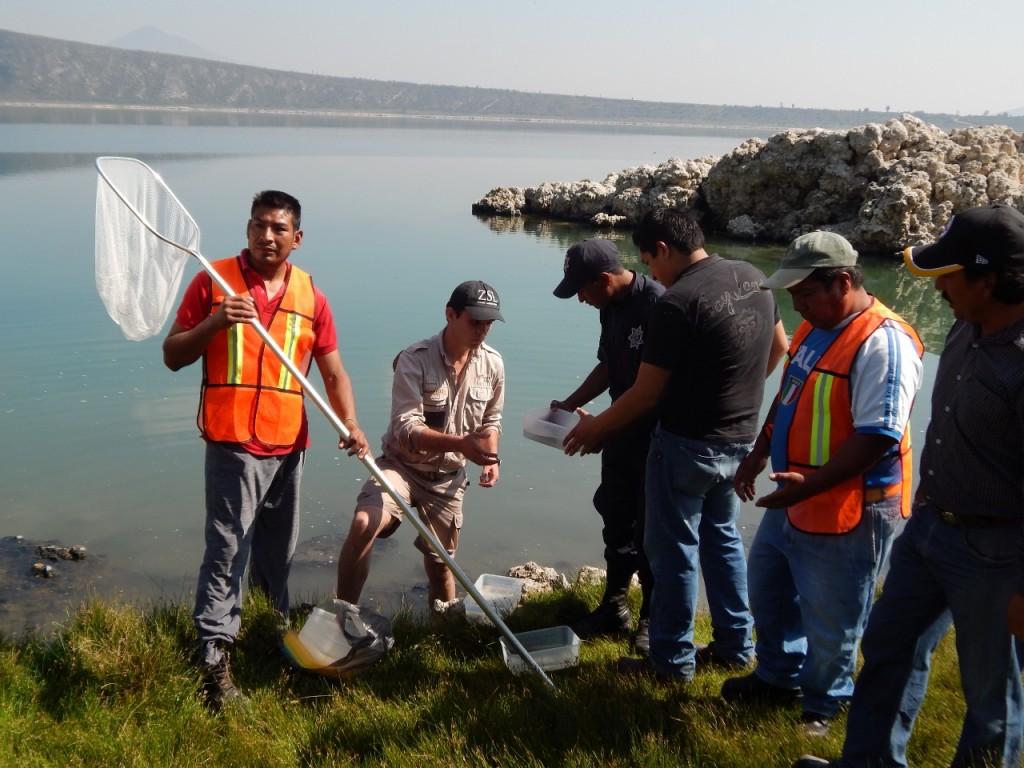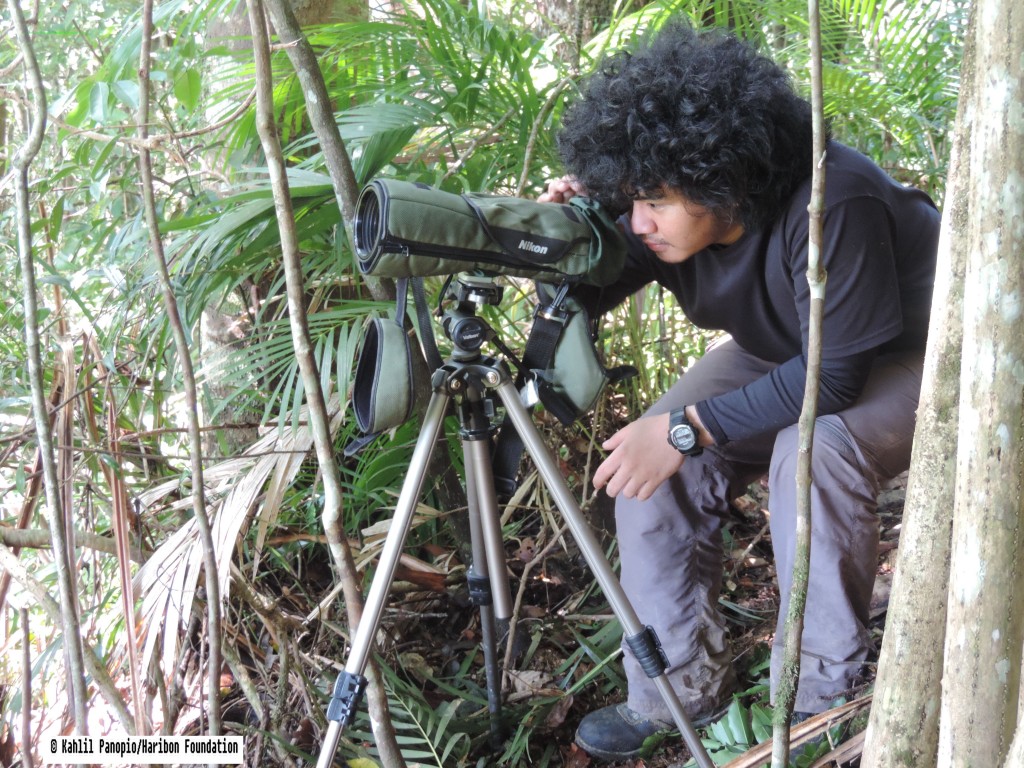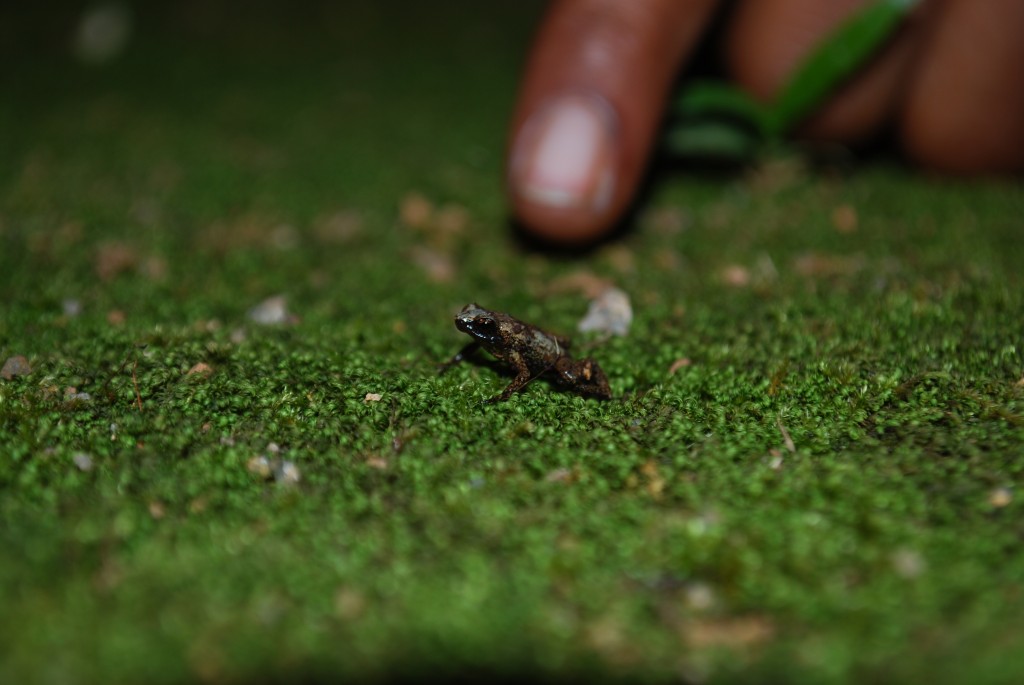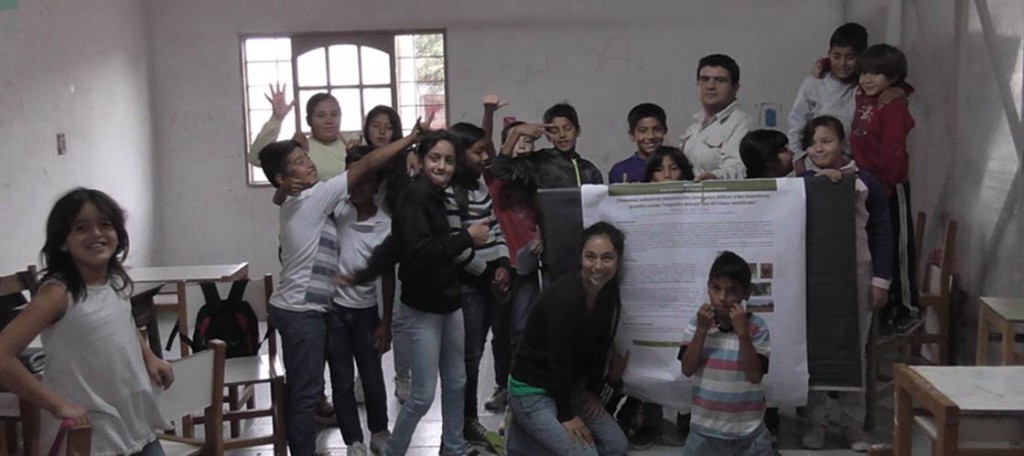
Kini Roesler surveying hooded grebe habitat.
Welcome to Life on the EDGE, our monthly blog featuring news about our projects, fellows, species, and all other things EDGE. This is our first update in a little while, so we’ve got a lot to cover!

In May, Chris Michaels from ZSL’s herpetology department visited two of our EDGE fellows in Mexico. Fellows Karla Pelz and Jose Alfredo Hernandez Diaz are studying the Lake Lerma salamander and Taylor’s salamander respectively. Chris trained them in some new technology and helped them with their surveys. Many new discoveries were made, including that Taylor’s salamander has very reduced lungs but large gills, are prone to parasite infestation, and that the smallest and largest animals were found at the deepest depths. A rubbish clean-up was organised with the local people in Alchichica and was an enormous success, also providing an educational opportunity, as many of the locals had no idea the salamanders were endemic to the area. Alfredo and Chris participated in a similar clean-up in June by in Alchichica.
In Argentina, hooded grebe surveys at the birds’ wintering grounds are underway, led by EDGE fellow Kini Roesler. Unfortunately, fewer birds were found than expected, sparking concerns for the species’ future. However, information on the grebe’s migratory patterns was gleaned from a dead subadult that was discovered, as the bird had been previously tagged at El Cervecero Lake. In addition, six new camera traps were set up at El Cervecero to catch the first birds returning come the spring.

Kahlil observing eagles in their habitat.
Good news for the Sagalla caecilian! EDGE Fellow Dawson Mwanyumba reports that caecilians have been found at almost all the sites he surveyed.
The Philippine Eagle continues to inspire conservation, as EDGE Fellow Kahlil Panopio successfully lobbied for for support from the native Dumagat people. The tribal chiefs were very receptive to his proposals and agreed to support his project and eagle conservation. In June, Kahlil received traning in setting up tree climbing rigs and survey equipment. He was thus able to observe the eagles in the dense canopy cover of the forest; an adult bird was spotted on day four of the survey, which is great news. In addition, Kahlil trained 20 prospective Wildlife Enforcement Officers (WEO) in biodiversity and local conservation laws, as well as conducting pilot surveys in possible eagle habitat.
EDGE Programme Manager Carly Waterman attended the First Pangolin Range States Meeting in Vietnam. Strategies for pangolin conservation were discussed and an action plan developed, which includes recommendations on addressing international trade in pangolins.
In June, head of herpetology Ben Tapley travelled to Guizhou and Shaanxi Provinces, China, to provide support to ZSL’s Chinese giant salamander conservation project, training team members and participating in surveys. Fanjingshan National Nature Reserve (FNNR), in Guizhou, has committed to conserving the giant salamanders and other local amphibians and reptiles, and will be building a new visitor’s centre with the giant salamander as the star.

A sooglossid frog.
EDGE Fellows Co-ordinator Olivia Couchman and ZSL’s Senior Learning Manager for Education, Rachel Haydon, conducted a two day workshop in the Seychelles, training 55 students in various conservation methods. They also took the opportunity to visit with EDGE fellows Diana Renaud and James Mougal, accompanying them on surveys. During those surveys, they counted 25 Seychelles sheath-tailed bats, which may be half the remaining population, as well as three species of Sooglossid frogs.
In Cameroon, EDGE fellow Rodrigue Ngafak counted 18 West African manatees in Lake Ossa over the course of five surveys. He hopes to eventually map out manatee feeding areas and hotspots, and see where they overlap with fishing spots. Six more surveys were carried out in the nearby Sanaga River with the help of Dr. Lucy Keith Diagne.

Esteban observing a tapir.
Elementary school students received lessons in biodiversity and how to identify Baird’s tapir tracks in a lesson taught by EDGE fellow Esteban Brenes-Mora in Costa Rica. Esteban hopes that by continuing lessons with the local children he may inspire the community to help conserve these animals. He is also working with local police and Conservation Area staff to set checkpoints and patrol the roads to slow drivers down, hopefully reducing the number of tapirs hit and killed by cars.
In Argentina, EDGE fellow Micaela Camino spoke to a group of 40 schoolchildren about her work conserving the Chacoan peccary. She also set up two new transects for surveying the peccary in the Argentinian Chaco.
It’s been a busy couple of months! Who bets July will be even busier?

Micaela with local schoolchildren.